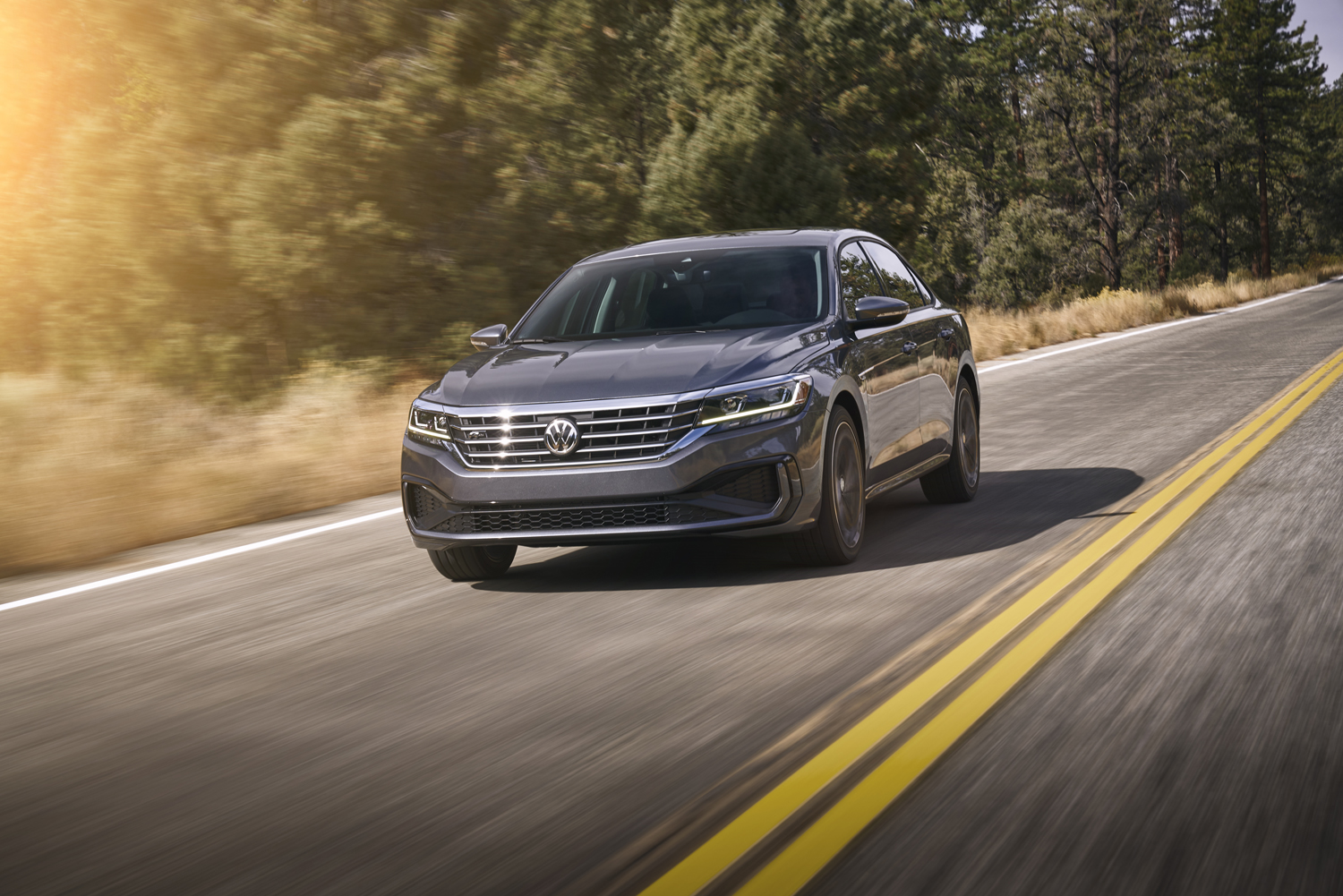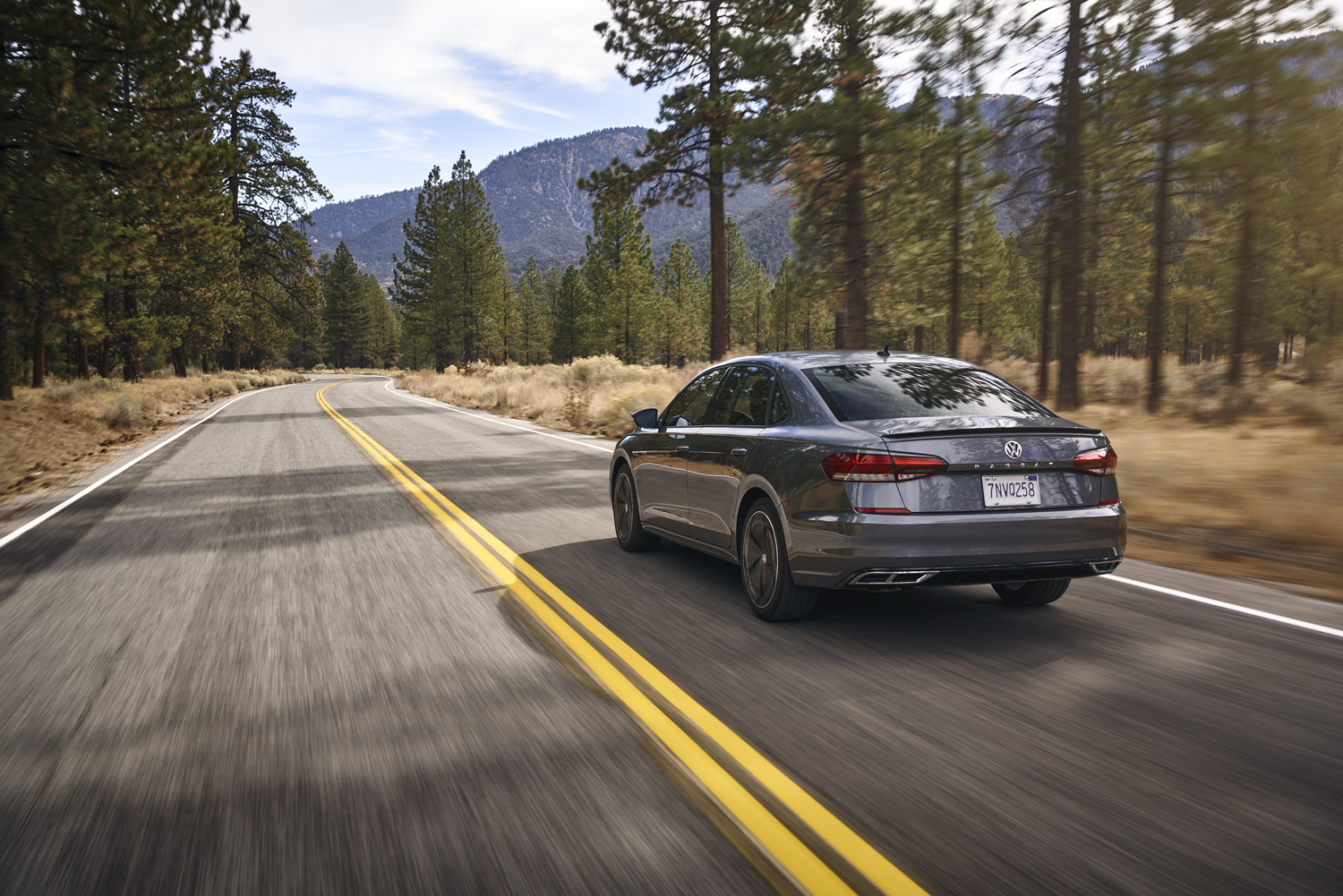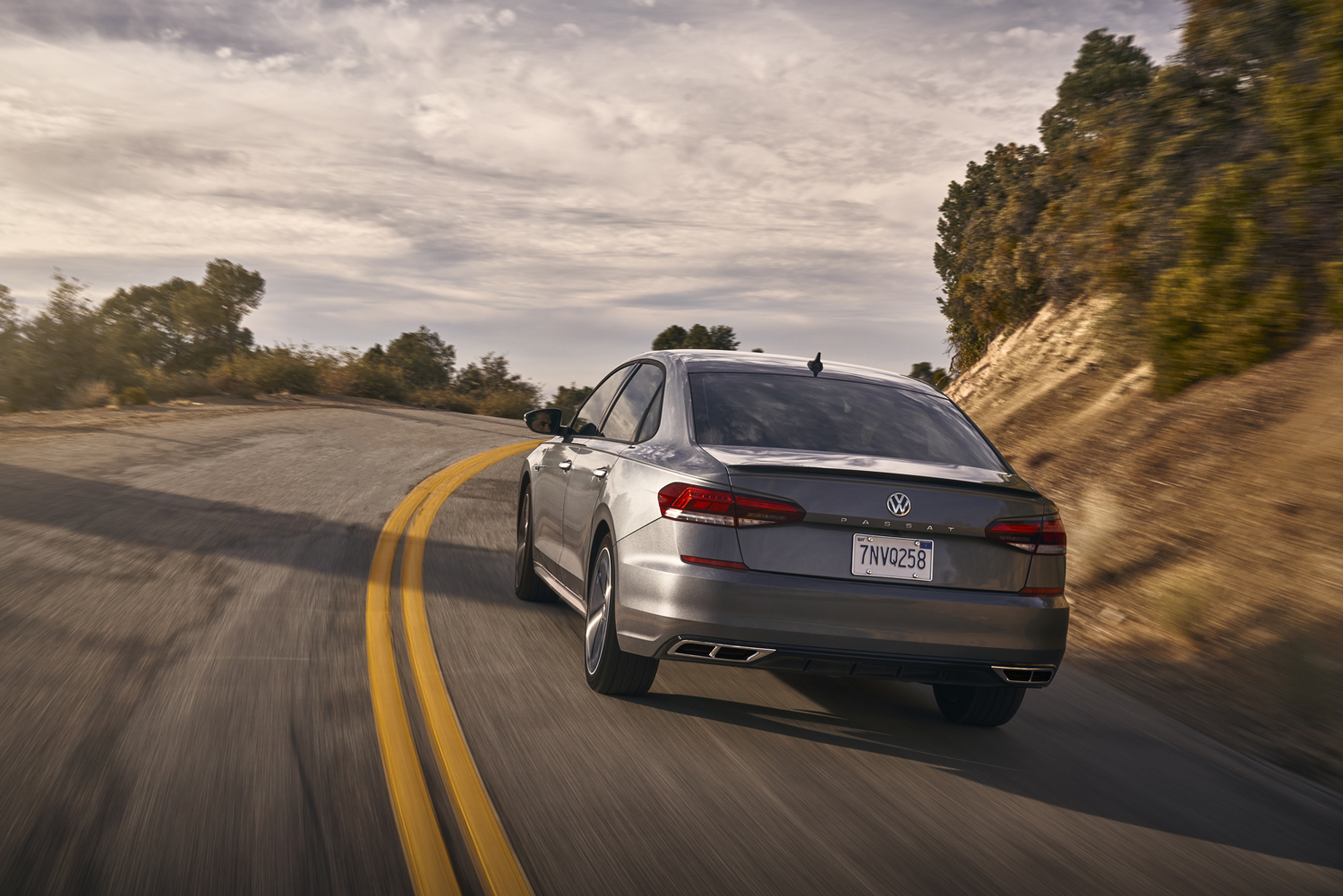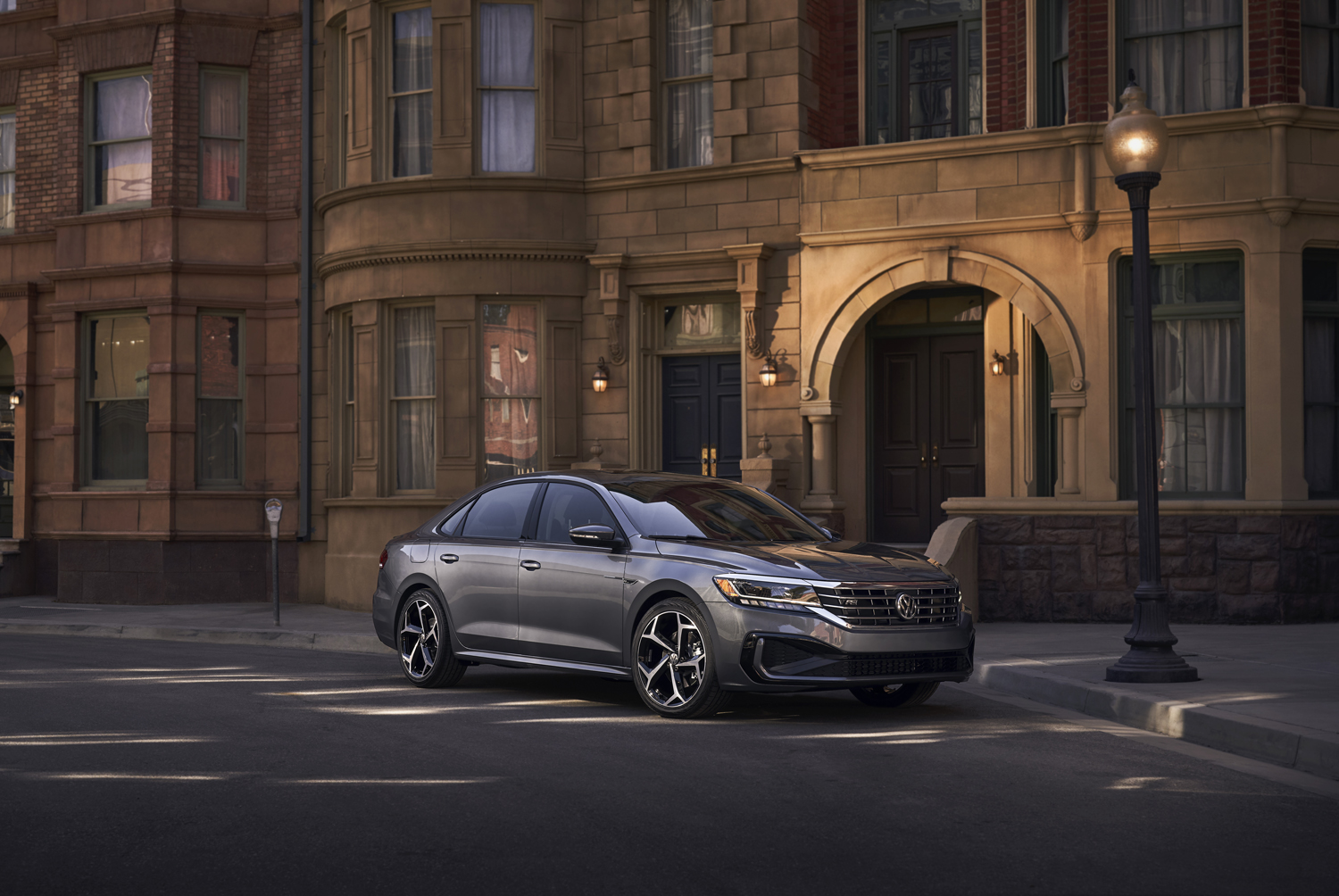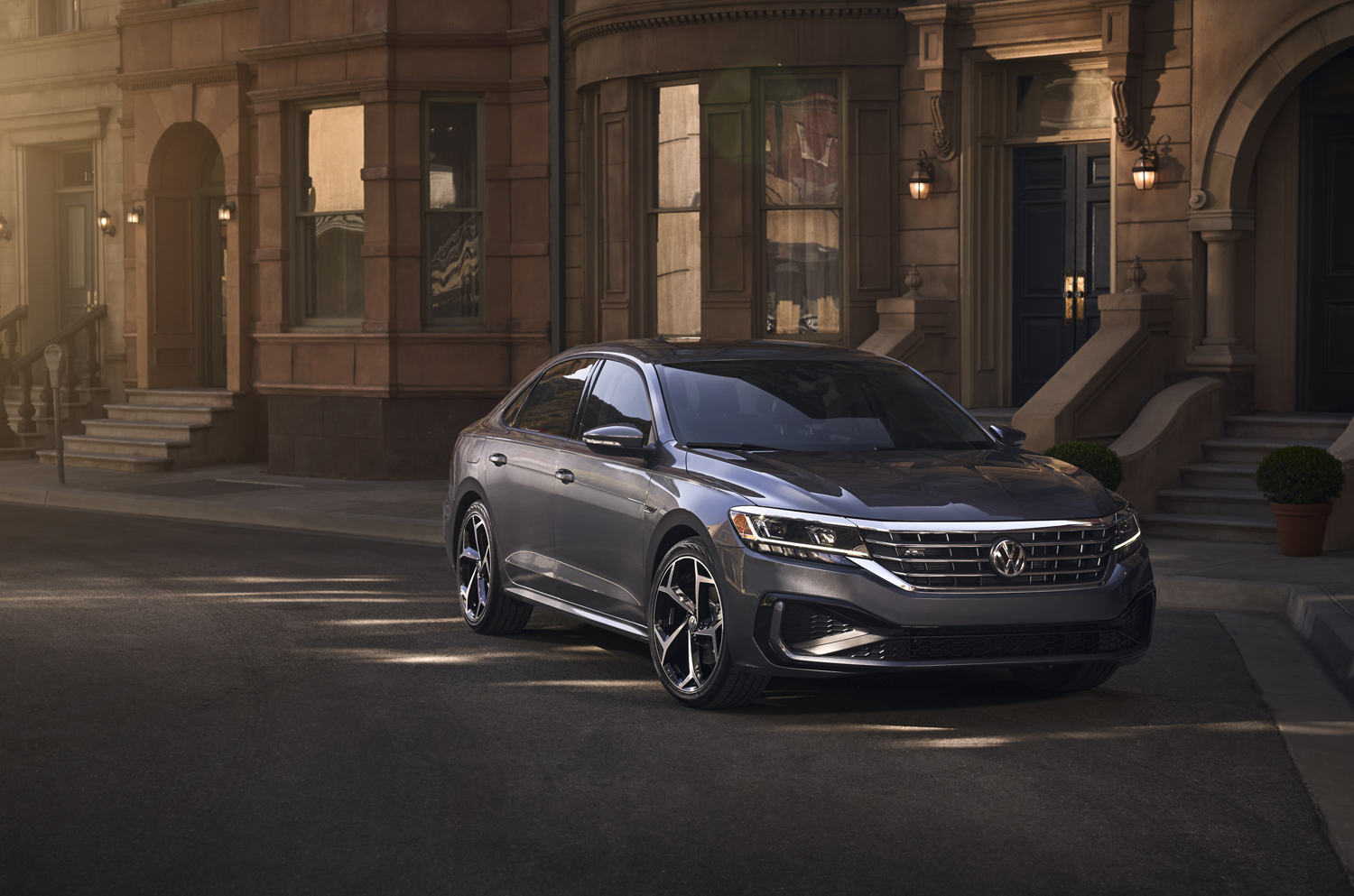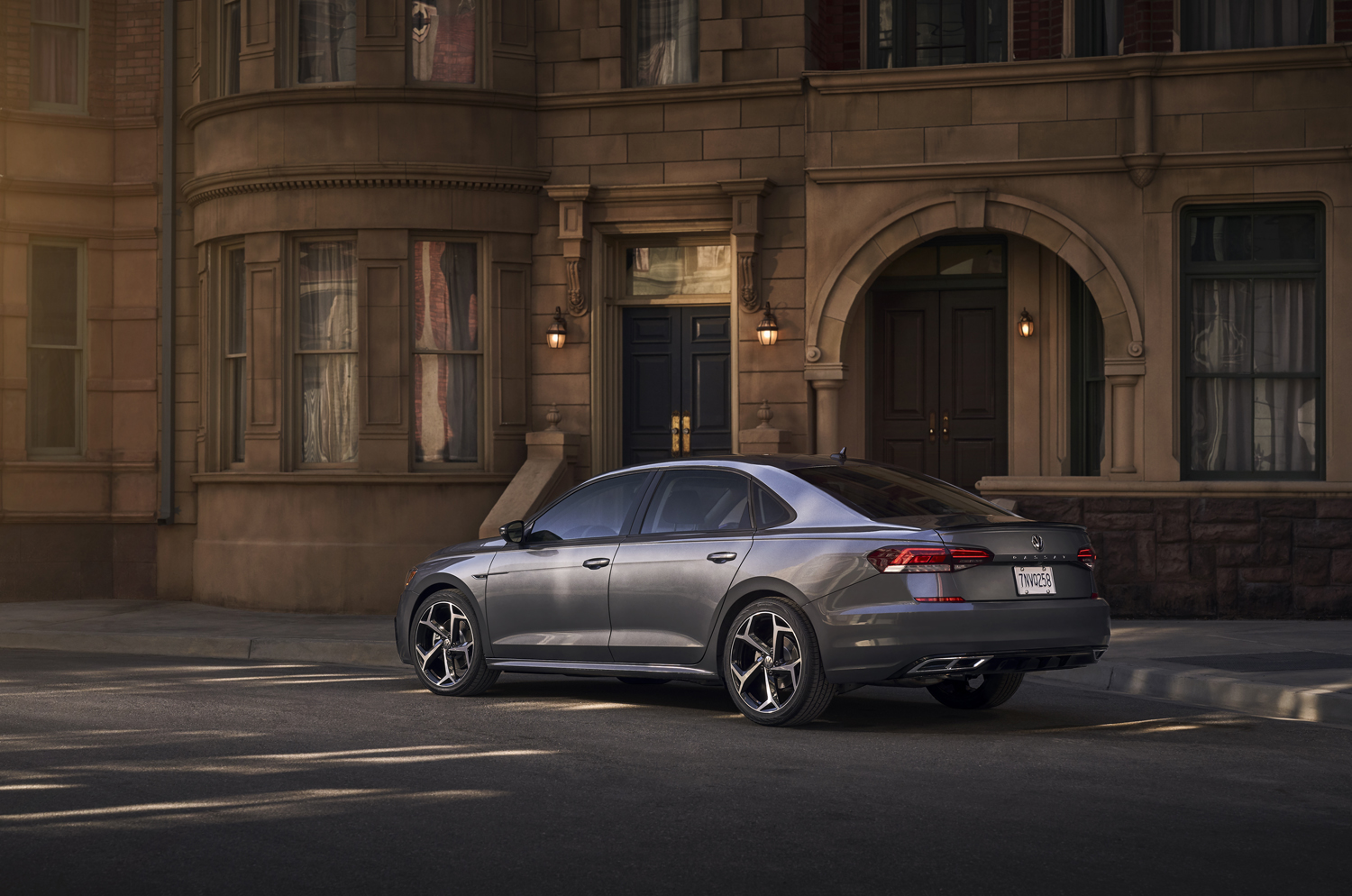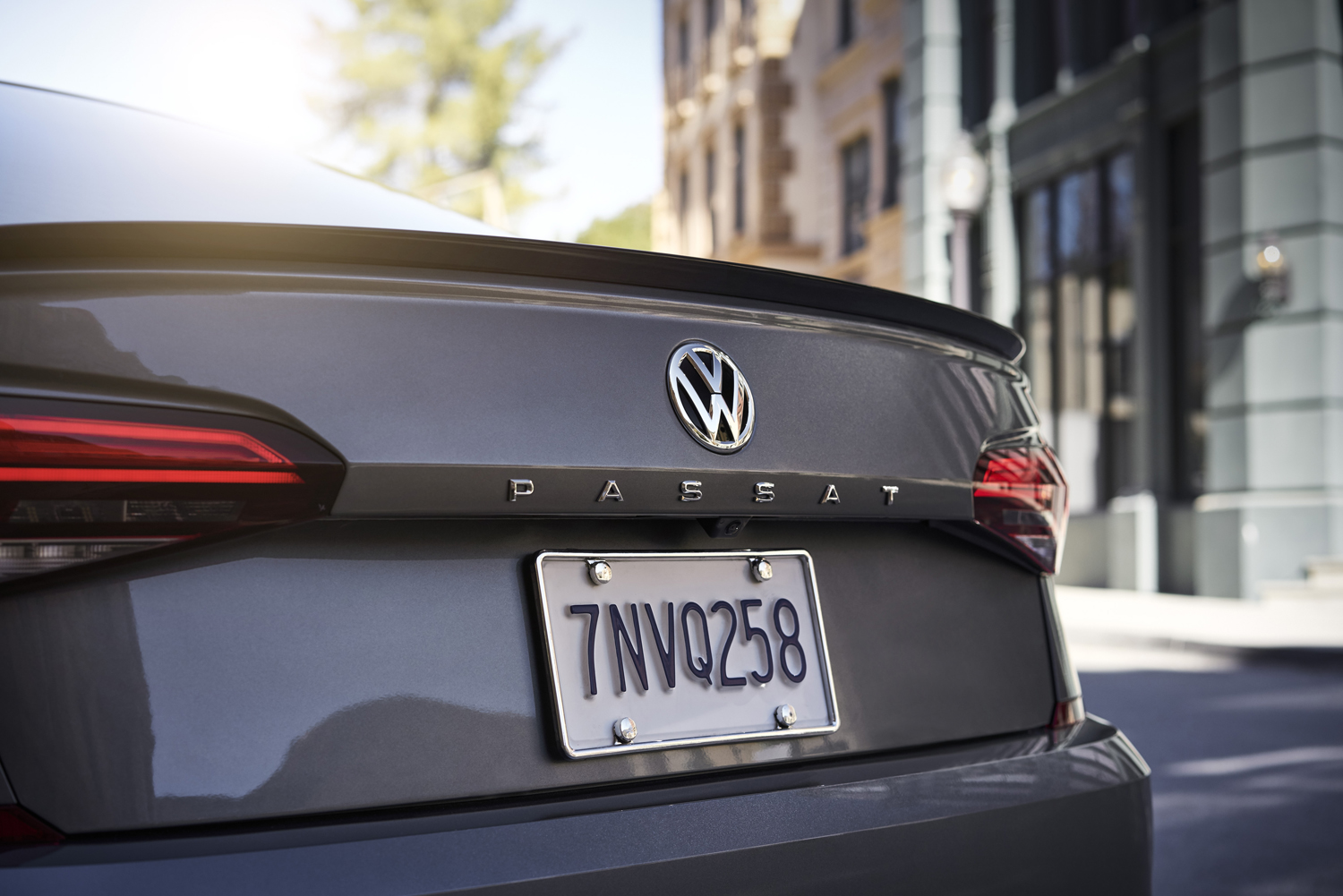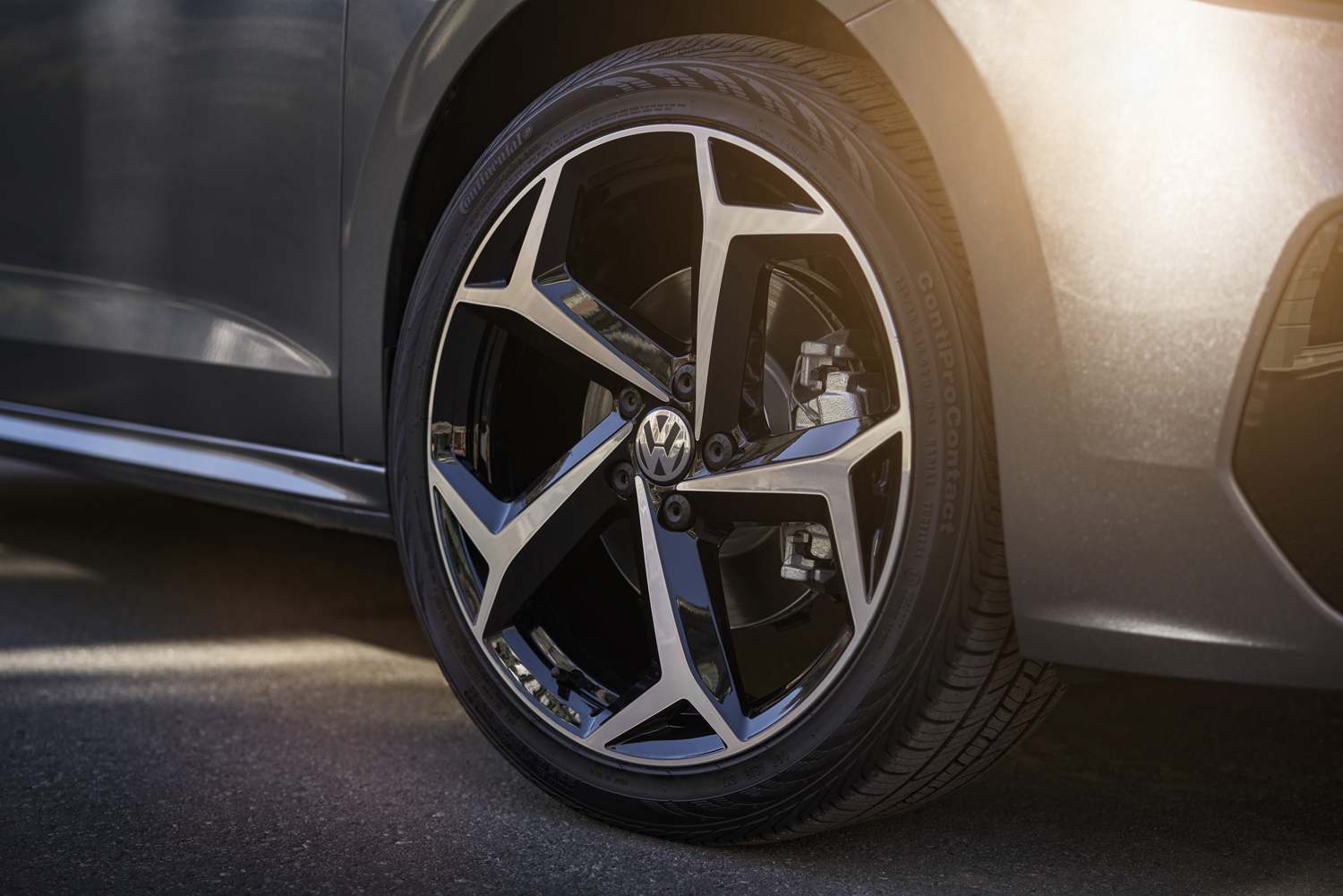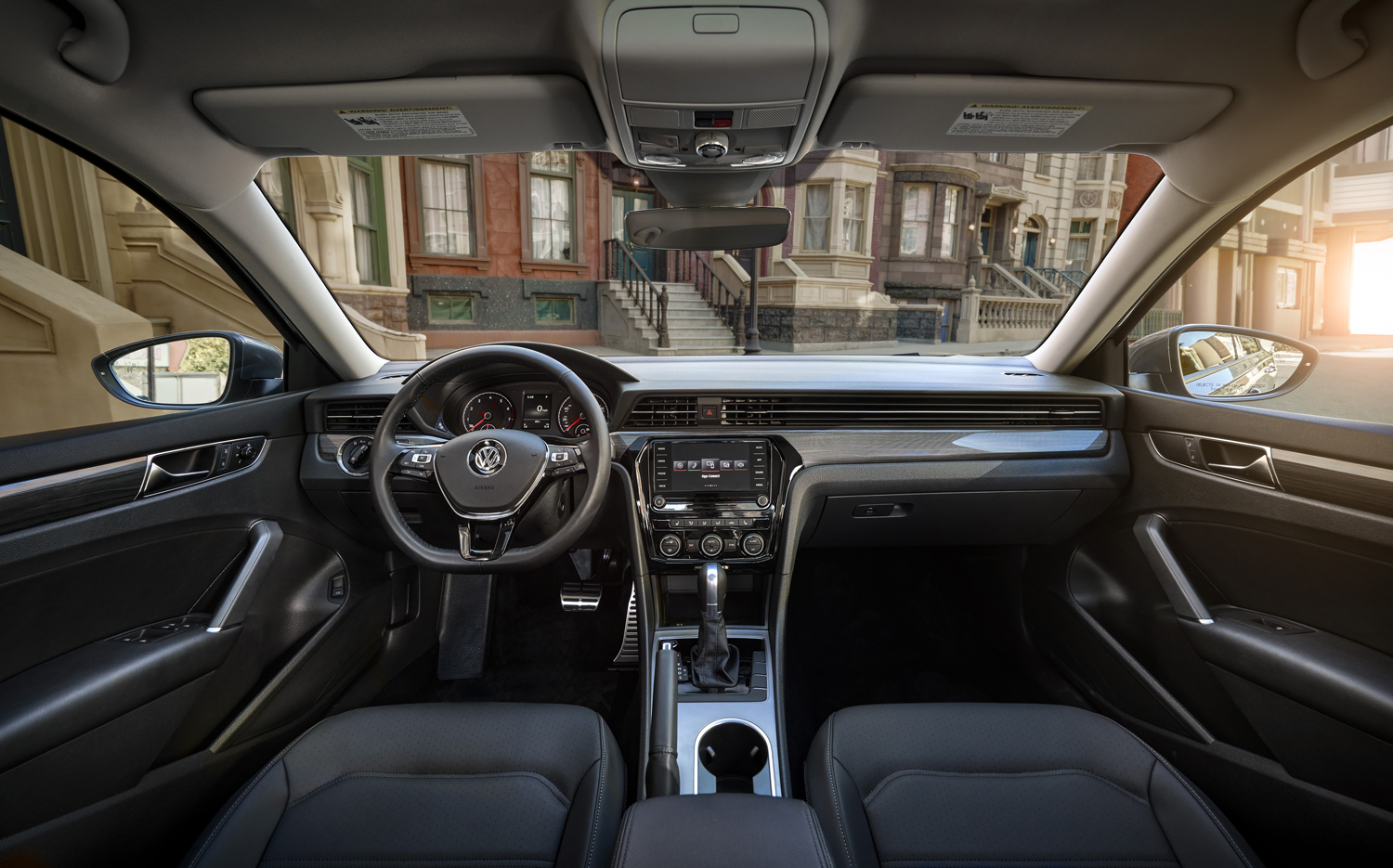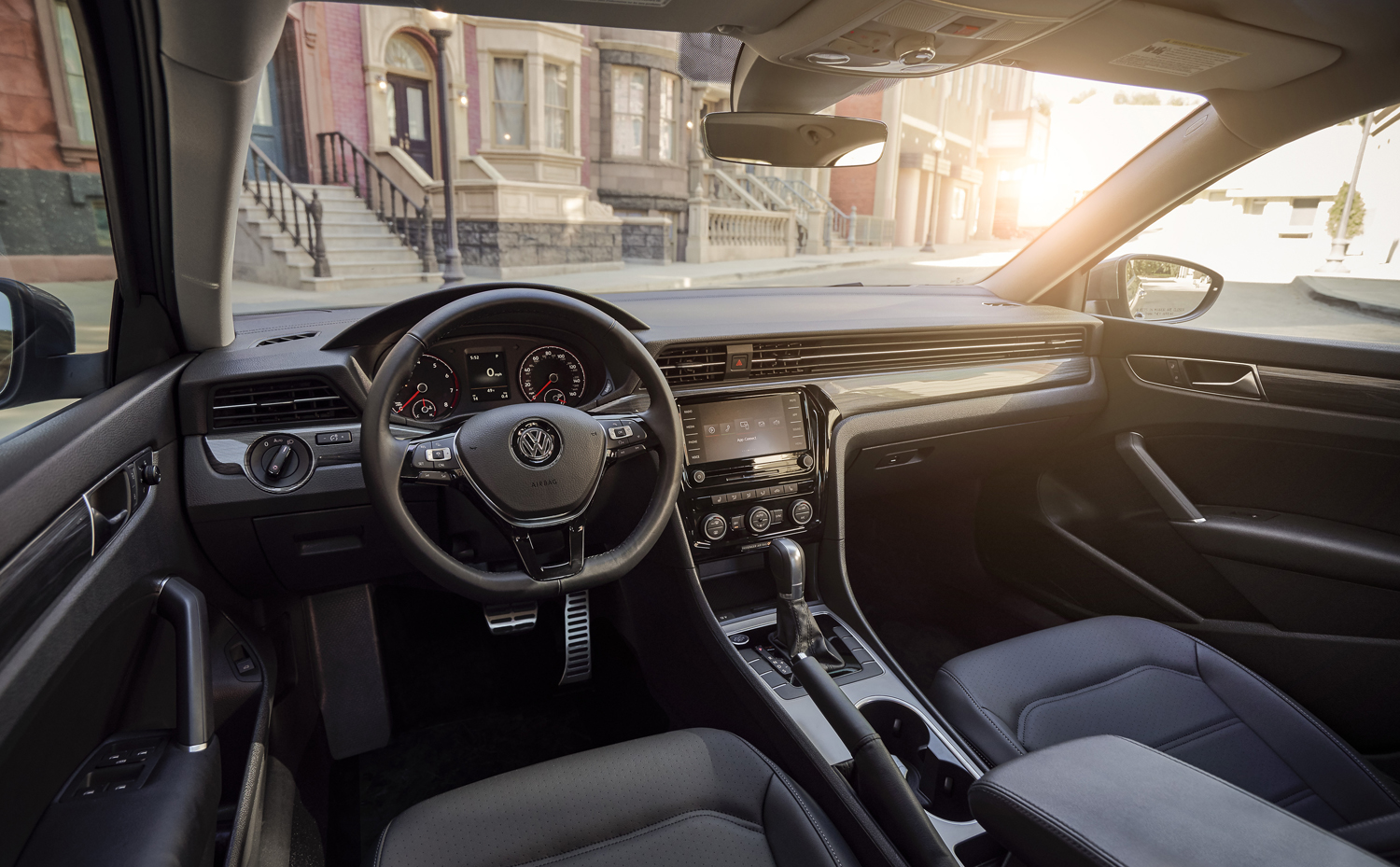The sedan segment is shrinking annually in the United States, but Volkswagen still firmly believes in it. The German firm traveled to the 2019 Detroit Auto Show to demonstrate its commitment to the segment by unveiling the redesigned 2020 Passat. Eleven months later, VW announced that the 2020 Passat will start at $23,915, and will hit showrooms before the end of the year.
Previewed in late 2018 by teaser sketches, the 2020 Passat boasts a bolder front end characterized by a five-slat grille that stretches into a pair of angular headlights. Designers added more rake to the roof line to give the model a sportier appearance; it’s also proof that the aesthetic updates go far beyond a simple nip-and-tuck. Walk around the back and you’ll notice sharper-looking lights. The 2020 Passat isn’t a brand-new model — it’s still based on the platform that has underpinned the current model since 2011 — but Volkswagen noted that every body panel with the exception of the roof is new.
The exterior updates go far beyond a simple nip-and-tuck.
As Digital Trends reported after driving a pre-production 2020 Passat at the company’s proving grounds in sunny Arizona, power comes from a turbocharged, 2.0-liter four-cylinder engine rated at 174 horsepower and 206 pound-feet of torque. The turbo four spins the front wheels through a six-speed automatic transmission. Fuel economy and performance specifications will be released closer to the Passat’s arrival in dealerships.
Volkswagen won’t offer a manual transmission, unsurprisingly. A V6 won’t be available at launch, but Autoblog learned a model with more power, in the vein of the Passat GT, could appear a little bit later in the production run. Your guess is as good as ours when it comes to what will be under the hood. Volkswagen has the six in its stable, but it also has access to a number of high-performance, turbocharged four-cylinder engines like the 300-horsepower unit that powers the Golf R.
The 2020 Passat’s $23,915 base price undercuts the 2019 model currently on sale, which carries a base price of $25,295. The base 2020 Passat S trim level also looks to be fairly well equipped, with standard features like autonomous emergency braking, blind spot monitoring, and LED headlights. VW will offer three trim levels above the Passat S — SE, R-Line, and SEL. The top SEL trim level starts at $32,090, and adds features like leather seats and a high-end Fender audio system. All variants will come with a six-year, 72,000-mile warranty that can be transferred to subsequent owners.
Updated on November 11, 2019: Added pricing information.
